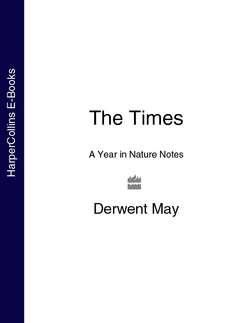Читать книгу The Times A Year in Nature Notes - Derwent May - Страница 9
4th January
ОглавлениеTHE CATKINS ARE already swinging on some hazel bushes. They are next spring’s male flowers. They appear in the autumn as tight green clusters, like a bird’s foot, but loosen as the pollen swells in them and dangle merrily from the twigs, and are then called ‘lambs’ tails’. At present, many of them are a bright lime green, but they will soon be more of a lemon yellow. The female flowers, which are like tiny crimson stars, will appear on the twigs in February.
In woods, coppiced hazels are still sometimes found in spaces between the tall trees. These are bushes that have been cut down so that they grow up again in a circle of long shoots around the base. These flexible shoots are then used in thatching and to make fences. Coppices are good places for woodland flowers to grow in the spring, but the bushes need to be protected from roe deer that nibble the bark.
Pheasants stalk about in the coppices, grubbing up roots to eat under the fallen leaves, but they often fly up onto a high oak bough to roost at night, out of reach of foxes.
